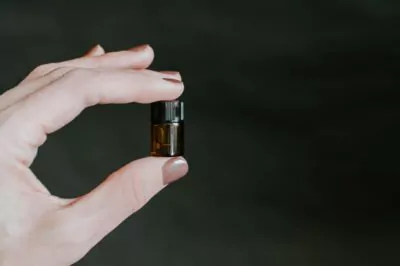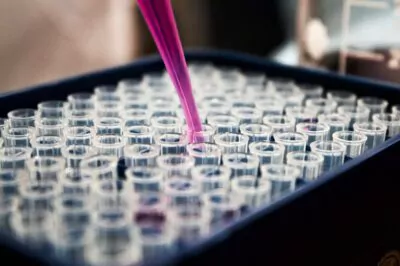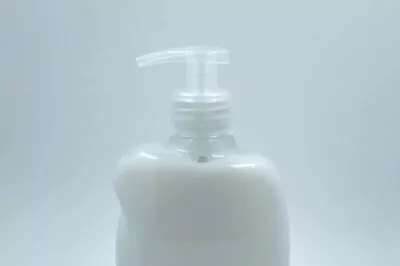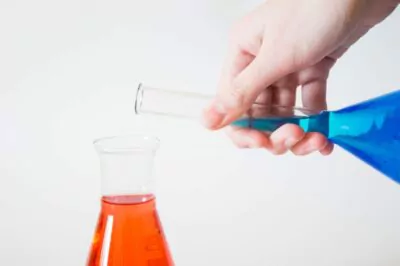Table of Contents[Hide][Show]
If you read through the ingredient list on your shampoo, you’re likely to find “glycol distearate.” This chemical compound is used as an emollient in cosmetic products, and is a combination of ethylene glycol (colorless chemical) and stearic acid (a common fatty acid). It also has a high foaming capacity, so you may find it in your liquid soap or hand sanitizer, as well as in bubble baths and body washes.
Though generally considered safe, this ingredient comes up short when compared to natural alternatives.
It may seem luxurious, but is it really nourishing your skin?
What is Glycol Distearate?
Glycol distearate, a compound of ethylene glycol and stearic acid, is a white to cream-colored waxy solid used in cosmetics for its versatile properties:
- Skin Conditioning: Softens and moisturizes skin.
- Viscosity Increaser: Thickens creams and lotions.
- Pearlizing Agent: Adds a pearlescent shimmer.
Found in shampoos, body washes, bubble baths, hand sanitizers, and concealers, it enhances texture and appearance. It can be derived from vegetable sources like soybean or canola oil, animal sources (cow or hog), or synthesized from stearic acid. The Cosmetic Ingredient Review (CIR) deems it safe for cosmetic use, though patch testing is recommended for sensitive skin. Its high foaming capacity also makes it popular in cleansing products like liquid soaps.
Uses of Glycol Distearate in Personal Care
Glycol distearate is a versatile cosmetic ingredient prized for creating a pearlescent shimmer in shampoos, body washes, and creams. It conditions skin, thickens products, blends oil and water, and reduces transparency for a luxurious look. While safe for most, sensitive skin may react, and natural alternatives often provide deeper nourishment.
How It Works and Key Benefits:
- Pearlescent Effect: Forms tiny crystals that reflect light, giving shampoos and body washes a shimmering, premium appearance.
- Skin Conditioning: Creates a protective layer to lock in moisture, softening and hydrating skin.
- Viscosity Modifier: Increases product thickness, making creams and lotions smoother and easier to apply.
- Emulsifier: Stabilizes oil-and-water mixtures, ensuring consistent, uniform formulations.
- Opacifier: Reduces transparency in products like concealers, enhancing their aesthetic appeal.
Applications and Insights:
Glycol distearate is a staple in personal care products, from foaming body washes to creamy lotions, due to its ability to enhance both function and aesthetics. Derived from vegetable oils (soybean, canola) or synthesized from stearic acid, it’s celebrated for its versatility but lacks the antioxidant or fatty acid benefits of natural ingredients like shea butter or olive oil. The Cosmetic Ingredient Review (CIR) confirms its safety, though patch testing is advised for sensitive skin to avoid rare irritation or allergies. Beyond cosmetics, it’s used as a microscopy embedding agent, showcasing its broad utility.
What are the Concerns?
Glycol distearate is generally safe, with no significant skin irritation reported by the CIR Expert Panel, but its chemical origins and limited nourishment raise concerns. Derived from ethylene glycol, used in antifreeze and industrial products, it may not truly benefit skin like natural alternatives.
Potential Concerns:
- Sensitivity: May cause irritation or allergies in sensitive individuals.
- Chemical Origin: Made from ethylene glycol, used in antifreeze, de-icing solutions, brake fluids, and synthetic waxes, concerning for natural-focused users.
- Limited Nourishment: Lacks the antioxidants and fatty acids of natural ingredients like shea butter or jojoba oil.
Who Should Be Cautious:
- People with sensitive skin or known allergies.
- Those avoiding synthetic or petroleum-derived ingredients.
While glycol distearate creates a pearlescent, luxurious look and creamy texture, it’s more about aesthetics than skin health. Many personal care products use such ingredients to seem rich and nourishing, but they’re often just chemical concoctions with minimal benefits. Why not choose true nourishment? Ingredients like aloe vera, olive oil, or rosemary oil, as in my Rosemary Peppermint Body Wash, offer gentle cleansing, moisture, and essential fatty acids to help your skin thrive.
Do you avoid glycol distearate? Please share your thoughts.
* * *
Photo courtesy Kwai7a .. »MiSs_7aRaKaaT« ;)! via Flickr.com.








Is there a legitimate alternative to using Glycol Distarate to “pearlize” homemade shampoos?
You are so off base on Glycol Distearate. As a cosmetic chemist for nearly 50,,,yes 50 years, I believe I have a real and different perspective on your “facts.”
* To begin with, CIR is a panel of experts and scientists with significant experience in this wonderful industry that uses scientific principles to evaluate the ingredients going into cosmetics. You should consider this depth of knowledge before going off on your “feelings” about something “chemical.”
* Sensitization testing is performed to elicit allergic responses, but I guess you didn’t know that based on your CIR commentary.
* Glycol Distearate is an ester produced from the REACTION of Stearic Acid and Ethylene Glycol, not a simple mixture of the two. You’re betraying your lack of knowledge in making this statement.
* Your comparison of Glycol Distearate to anti-freeze and citing its “industrial” usage is telling a half-truth, which in fact is similar to not telling the truth at all…just your statement that Glycol Distearate is similar to Ethylene Glycol. Get the point?
* Hogs and Cows have not been sources for Glycol Stearate for years as economics have shifted sourcing to vegetal sources. Hogs and Cows are now routinely eaten. I wonder if your clients eat them or wear their skins? Do they know that JELLO is nothing more than rendered Cow bones?
* Finally, the cosmetic industry is and always be the ultimate self-regulating industry in this country because of consumer response which is a strong and growing force that is reflected in companies such as yours that are looking for a different approach to skin care and to cosmetics in general. As part of your competition we are not perfect but are responding to the wants and needs of the natural/organic customer, not “bad,” just different.
In the interest of fairness, I hope you post this response,
Fred Burmeister
Without knowing anything about cosmetic ingredients, but having a reasonable understanding of chemistry, I had an immediate suspicious reaction to the way this article condemned this ingredient on the basis of industrial use in other “nasty chemical” products.. and started drawing the opposite conclusion: it sounds like this ingredient is safe given the lack of actual concrete supporting information, rather than vague notions about “nasty chemicals on your skin”.
I appreciated this comment.. and I’m glad the site admins left it here. I do think it could have been worded with a little bit less hostility, though 😉
I’m so sick of seeing this stuff in things I buy or would like to buy, there is MUCH better alternatives like you said, it’s just companies want MAX profits as little spending money as possible regardless of how bad it is for us. If it can increase their bottom line they will use it, they don’t care about us at all.
We dream of a world where companies care about the people they are serving and the planet we live on. Yes profit is a driving force for most but look out, little companies like ours are lighting up the way to a new day :). And we do care about you :). Make it a wonder-filled day.